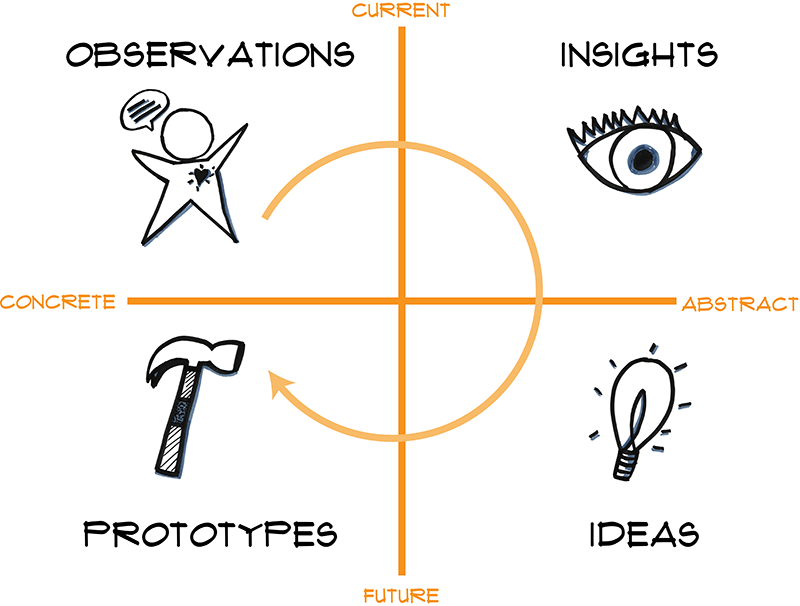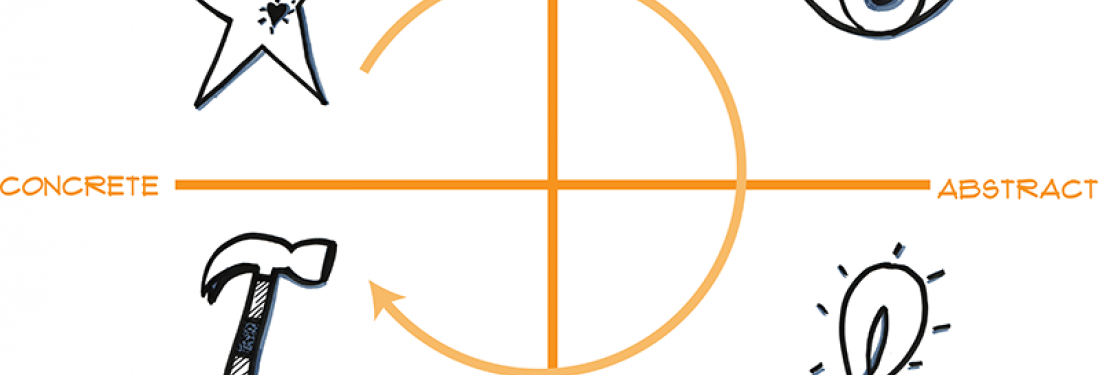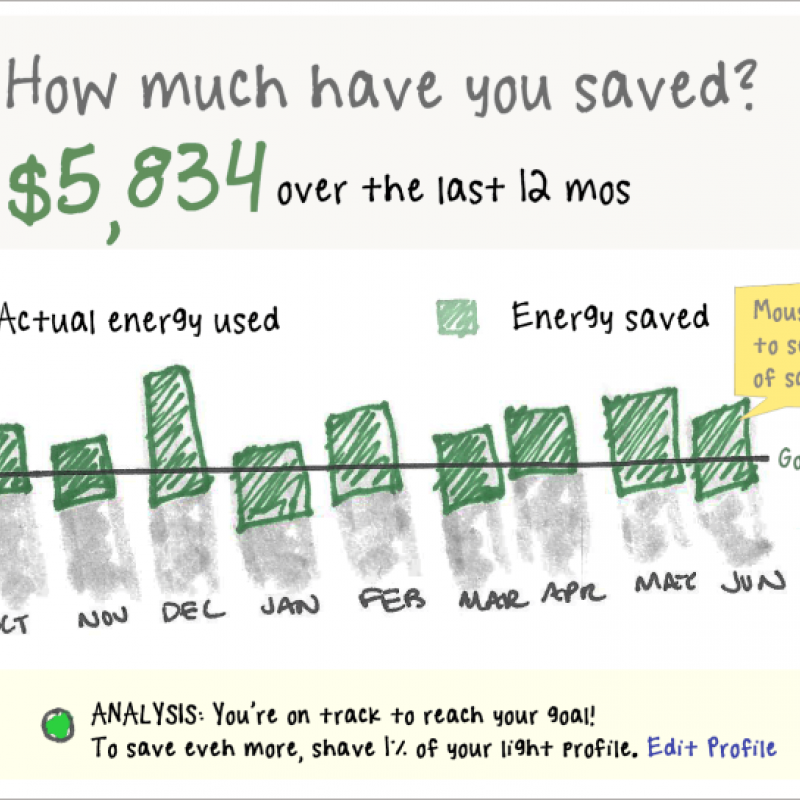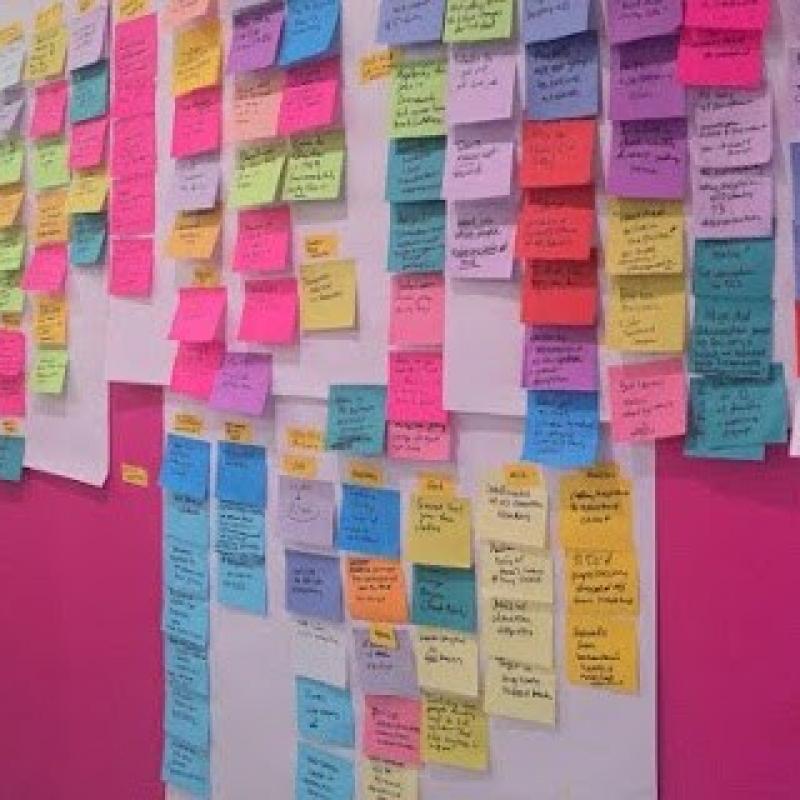Design thinking and Sliced Bread go back about 14 years. But, for the last five, I’ve been teaching design thinking at the Stanford d.school and more recently, in the Computer Science department. The same questions about design thinking keep cropping up from clients and students so I thought I’d set the story straight.
1. What is design thinking?
Design thinking is a human-centered process for solving problems that results in effective, innovative solutions.
It includes a series of specific steps that must be done in a specific order and a set of core principles. The steps are observations, insights, ideas, and prototypes — which are followed cyclically . The principles are empathy, thinking by doing, iteration, and collaboration.
It is a way to radically increase the likelihood that you are going to have success when you’re trying to solve a problem or do something new.
2. Can you describe the steps in the process in detail?
There are many different diagrams of the design thinking process, but our favorite displays it as a circular, iterative workflow that starts at the top left:
Let’s break down the steps:

Observations
This step is the foundation of design thinking — user research. Go out and understand what is happening with the problem you are trying to solve by observing and interviewing users. Gather data about the problem by understanding the human stories. The first time you cycle through this quadrant, the type of user research you’re doing is called Needfinding because it’s about understanding user’s needs. This is also the time to interview all the stakeholders involved in this problem — i.e not just those that have the problem, but the folks who understand the business opportunity and the technology options. Subsequent times when you cycle through this quadrant, you’ll do different kinds of observation of your users like rapid experimentation, usability testing, co-creation sessions, etc…
Insights
Once you’ve completed your observations, it’s time to unpack what you learned to find the insights that are going to drive the rest of the process. Initially, your insights will be focused on defining what you are solving for. What stories did you hear in your research that really stick out? What needs did you uncover? What frame will you take on the problem space? In subsequent iterations, insights will be focused on teasing out what you learned from user testing and rapid experimentation to evolve your idea or take it in a new direction.
Ideas
In this step, you take the insights that you’ve gathered and use them to seed a brainstorm. In design thinking, brainstorming is taken to a new level through structured rules which encourage creativity and through the link to real user needs. This is also one of the best steps to incorporate radical collaboration, bringing in people from different backgrounds to help brainstorm solutions from new perspectives.
Prototypes
The final step in the design thinking cycle is about thinking by doing. Stop talking about the ideas and actually make something that people can evaluate and discuss! You might sketch a workflow, build a model, create an HTML wireframe — it all depends on what questions you are answering. You might prototype to explore the idea space for yourself. You might prototype to test some aspect of the idea in the next observation cycle with users. Or you might prototype to convince others to fund the idea. As you move through iterative cycles, the prototypes will become more and more refined culminating in the final solution.
Those are the four steps. Now lather, rinse, repeat.
3. Why is design thinking so effective?
Two reasons:
One, design thinking has a laser focus on the actual, human roots of a given problem. By understanding and empathizing with the distinct human stories underlying a problem, you are able to solve for real needs from the beginning. And, by remaining in touch with users throughout the design cycles, you can stop guessing and make decisions based on actual human feedback.
Two, design thinking provides a defined, replicable approach for a creative process. When followed correctly by skilled practitioners, it virtually guarantees an effective, innovative solution to problems that are simple or fabulously complex and ill-defined. This has been proven many times over by studies at Stanford, well-known companies, and in our own work at Sliced Bread. We don’t want to take on a problem without a guarantee that we will get somewhere great at the end. Design thinking gives us the confidence to offer that kind of guarantee.
4. Is design thinking the only way to solve problems and be innovative?
Of course not. There are many ways to solve problems including sitting at your desk and thinking really hard. This method happens to be extremely effective so we are going with it.
5. What kinds of problems can it be applied towards?
You can use design thinking to solve ANY problem. This includes business problems and personal problems. I used design thinking to help my client think through the process for server installation, to help my child deal with a mean kid at school, and to plan a party. It’s the same process…only the content differs.
6. Who can do it?
Anybody can learn the design thinking process and use it to solve problems. However, at the start not everyone can do it well. For example, little kids can learn the rules and techniques of soccer. However, it’s only through a lot of practice that someone can become a soccer superstar like David Beckham. Just like anything else, the best way to improve in design thinking is through practice and coaching. Getting coach by an expert mentor is the best way to learn. Reading about it is not going to make you better…it will just help you understand the rules of the game.
7. Can I just do parts of it and be successful?
Sure, you can use the tools individually and be partially successful. However, if you are solving a problem soup to nuts, you need to follow the process soup to nuts.
8. Can you do design thinking without initial user research?
No.
9. How do I get started?
I recommend taking a class or hiring someone (like us) to help you do it. You can read a book to get an introduction, but many of the skills like how to interview people effectively or how to pull out the insights from your interviews can’t be learned without watching others model the right techniques and without strong coaching. If there are no workshops locally, find an online class that will at least give you some examples of how it works that you can watch. Or, better yet, hire someone who can help you walk through the process the first time and teach you along the way. If you hire someone who is going to follow the process to solve your problem, make sure they emphasize the need for you to be involved…otherwise they are breaking one of the rules of design thinking, collaboration.
10. How did you get so good at it?
Two reasons:
One, I have been doing it for a long time and have been working with the world’s best coaches. Folks like Michael Barry and Pam Hinds who also teach at the d.school, coworkers like the fabulous Mia Silverman, Jenny Mailhot, Kim Ladin, and Molly Wilson who are fabulous design thinkers, and astute clients who ask us why we do what we do and force us to explain our processes. All of this makes you awesome.
Two, I believe in the process. I believe in it so much that I am willing to follow it in any circumstances because I can see the power that it has. When a client tells us they don’t have time for user research, we don’t do the project because we have no way of guaranteeing the results. I wouldn’t want to spend a lot of money on something where I’m not sure if it’s going to work and so we are not going to accept our client’s money under those circumstances.







